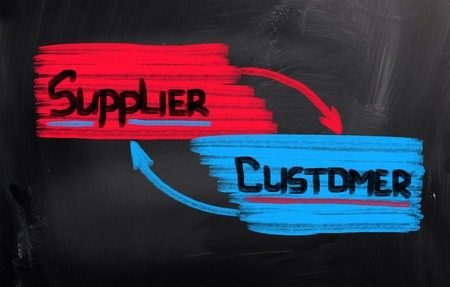 Yes is the answer according to a Wisconsin report from a study of OEM-supplier relationships. The objective of this study was to improve supplier performance through training, leading to gains for both OEM’s and suppliers. The OEM’s in the study were large corporations and the suppliers were mid to small in size.
Yes is the answer according to a Wisconsin report from a study of OEM-supplier relationships. The objective of this study was to improve supplier performance through training, leading to gains for both OEM’s and suppliers. The OEM’s in the study were large corporations and the suppliers were mid to small in size.
Proficient Sourcing supplies candidates for OEM procurement requirements. Most of our companies are small to medium in size, and the difficulty encountered serving a large corporate customer is exactly what the Wisconsin report deals with. It is also an area where we provide assistance to both parties.
A summary of the findings included this:
“Barriers to improved supplier performance and more effective and mutually beneficial collaborative relationship between OEMs and the small and medium enterprises (SMEs) arise both from suppliers’ difficulties in adopting more advanced production practices and from OEMs’ own behavior. Thus, OEMs identify the following problem areas in their relations with suppliers: high cost pressures and suppliers inability to provide regular price reductions; price reductions as a constraint on suppliers’ investments in improvements; difficulty in controlling quality, delivery, and time to market; inability of suppliers to achieve improvements independently; and insufficient support for workforce development”.
Is this your situation with your suppliers? Perhaps you share the 6 commonalities found among the OEM’s:
- OEMs are trying to become more flexible in order to respond more rapidly to market conditions and opportunities.
- They are relying more heavily on their suppliers to perform manufacturing operations formerly done in-house.
- At the same time they are trying to reduce the number of suppliers in their supply base.
- As a result, OEMs are growing more concerned with improving the performance of their suppliers in terms of price, quality, delivery, and flexibility, with particular emphasis on reducing lead times.
- They are forging closer relationships with suppliers to align them with their own companies’ goals.
- They are initiating efforts to provide training services to suppliers in order to improve the latter’s performance, though not always at a consistent level.
However, the study then observes this:
“There are also a number of differences, frequently confounding suppliers who sell their products to more than one of these (large corporate) customers. The large size and complex organizational structure of the OEMs generate a wide range of often conflicting messages flowing to the suppliers. Fluctuations in demand patterns mean that each OEM has a different set of requirements which can become more or less urgent depending on when firms need to get their products to market. Each OEM also sells to a somewhat different market with varying requirements, some based on service, others on time and speed. In addition, each OEM has its own manufacturing and procurement philosophy, often based on the ideas of an external academic guru or consultant, and imposes its own supplier qualification and certification procedures. A closer look at the firms thus reveals that despite many commonalities, the differences between them make it difficult for suppliers to satisfy their new demands.
“However, …OEMs can also impose considerable constraints on effective supplier development and collaborative relationships. Some of these serious obstacles are created by OEMs’ unrelenting pressures for price reduction; shifting costs to the suppliers; abusing trust, and organizational inconsistencies, such as high staff turnover, communication barriers and absence of strategic fit between corporate and plant-level supply chain policies”.
It appears to us that neither large OEM nor smaller supplier appreciates the structural differences in organization each faces in a relationship. Simple steps, such as visiting the other’s facility, can often go a long way to reduce, and even eliminate some of the problems reported in this study.
We live in a world of rapid change, and the OEM-supplier relationship has undergone great change over the past few decades. In the 1970’s OEM’s began to challenge the vertical integration model of large manufacturers which had served as the primary business model for decades. To successfully compete in the growing globalization of the marketplace, companies needed to commercialize new products faster while products’ life cycles became shorter. A wider range of products was needed, and that increased the complexity of design, planning, production and all other activities associated with manufacturing companies. The Ford model embodied in the River Rouge plant (iron ore in, autos out) no longer proved effective. As a result of these things, the importance of a vigorous supplier base grew.

